GCP Cloud Digital Leader Certification
Object Storage
Demo Creating a GCP storage bucket
Welcome to this guide on creating a Google Cloud Platform (GCP) Storage Bucket. In this walkthrough, you'll learn how to set up a storage bucket, review its key configuration settings, and understand best practices when managing your cloud storage.
Verify Your Project in GCP Console
Start by confirming that you're working within the correct GCP project. In the console, you should see details similar to those in the image below:

Access Cloud Storage
In the GCP Console, search for “Cloud Storage” and select the corresponding option from the menu. This will navigate you to the storage buckets overview screen:
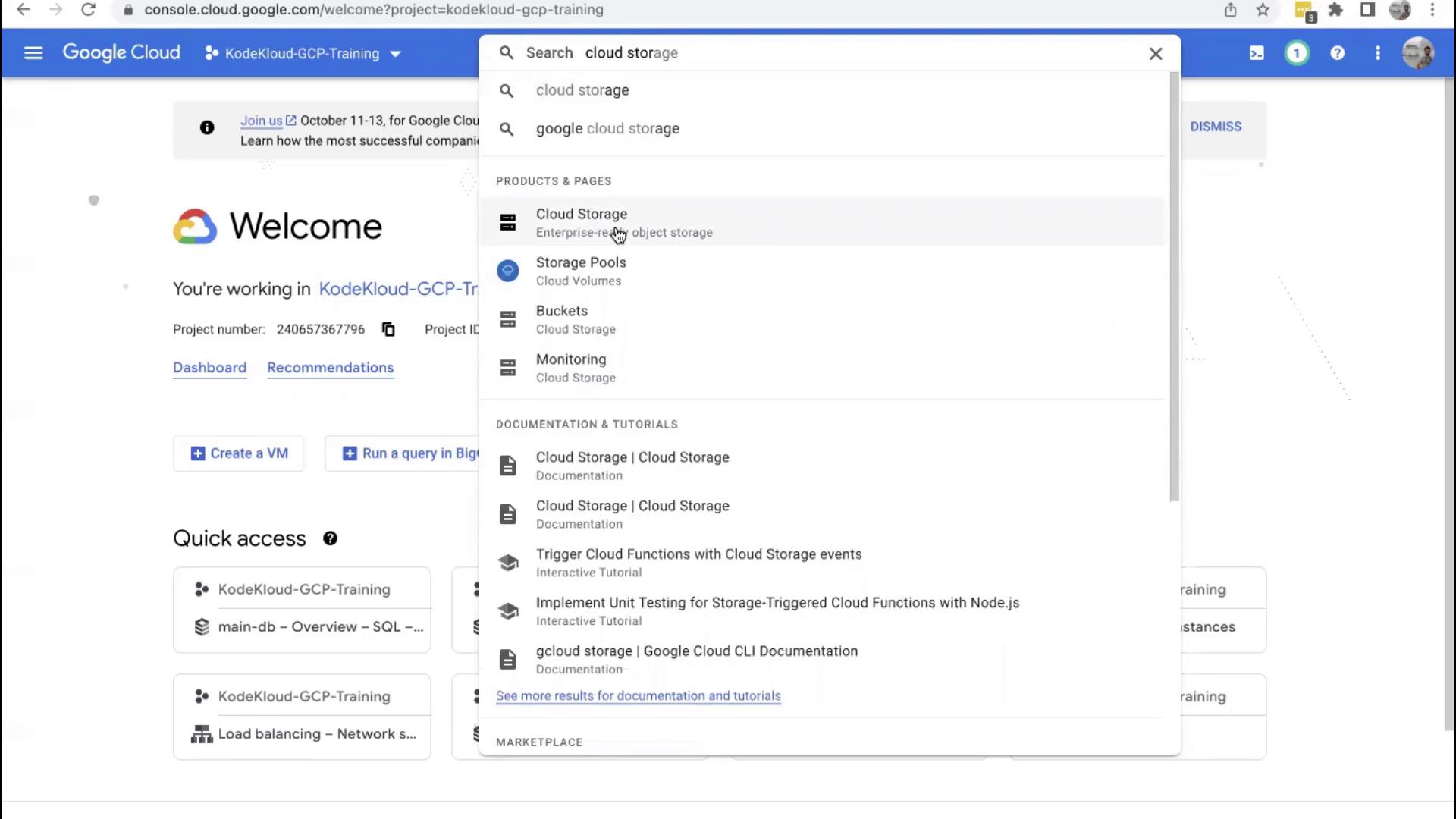
Since there are no storage buckets listed yet, click on Create Bucket to get started.
Create a New Storage Bucket
When creating a bucket, you need to provide a name. Remember, the bucket name must be globally unique, not just unique within your organization.
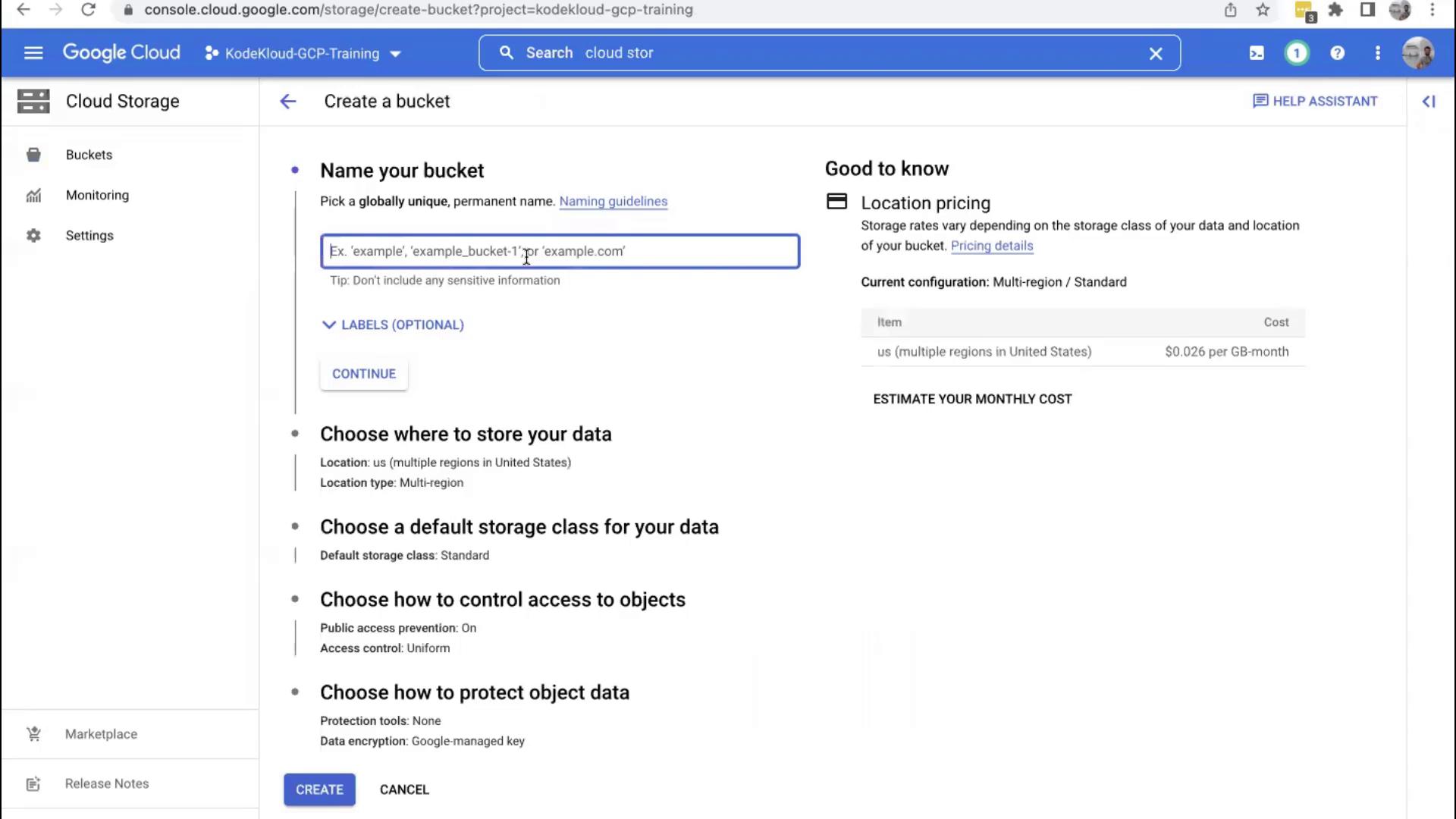
Naming Tip
A helpful naming strategy is to start with your company prefix (e.g., "pharma") followed by a descriptor for its purpose (e.g., "store-data-information").
Once the name is set, click Continue. If the chosen name isn’t globally unique, GCP will alert you with an error, prompting you to try a different name.
Configure Bucket Location and Storage Class
Choose a Region
Select the region where your data will be stored. Depending on your compliance and data residency requirements, you might choose a specific region. Alternatively, you can opt for a multi-region setting if you want high availability by replicating data across multiple regions. For this demonstration, the multi-region option is selected. Click Continue after making your choice.
Select a Storage Class
At this step, you choose a storage class that best meets your needs. Although we won’t dive deep into the different storage classes in this article, the default setting is sufficient for this demonstration. Move forward with the default options.
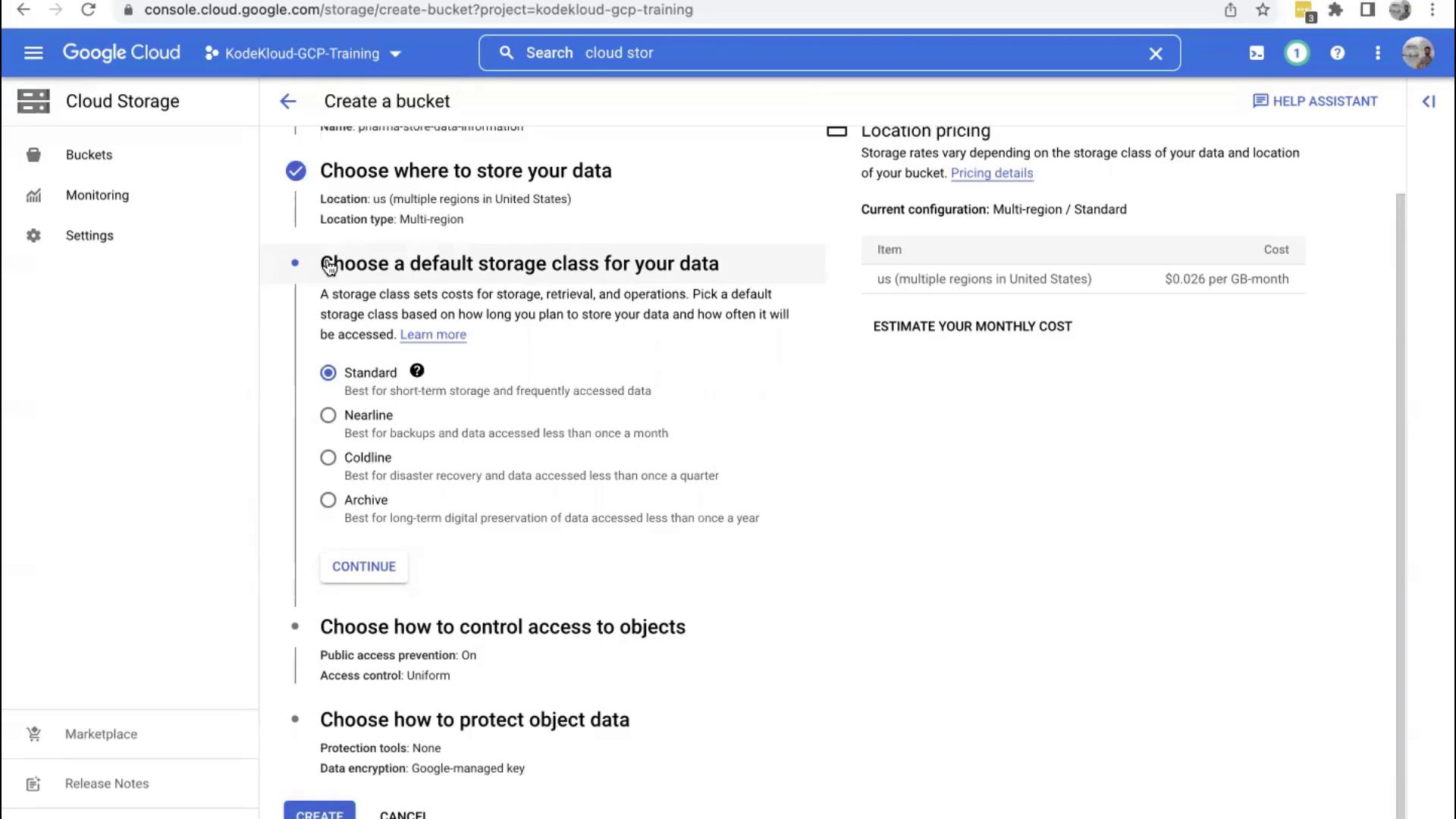
Enforce Public Access Prevention
Before finalizing the creation, GCP displays an important warning regarding public access:
Security Warning
Exposing a bucket to the public internet can be risky because unauthorized users might gain access to your stored data. GCP recommends enabling the option "Enforce public access prevention on this bucket" to keep your data secure.
Check that the public access prevention setting is enabled and then click Confirm.
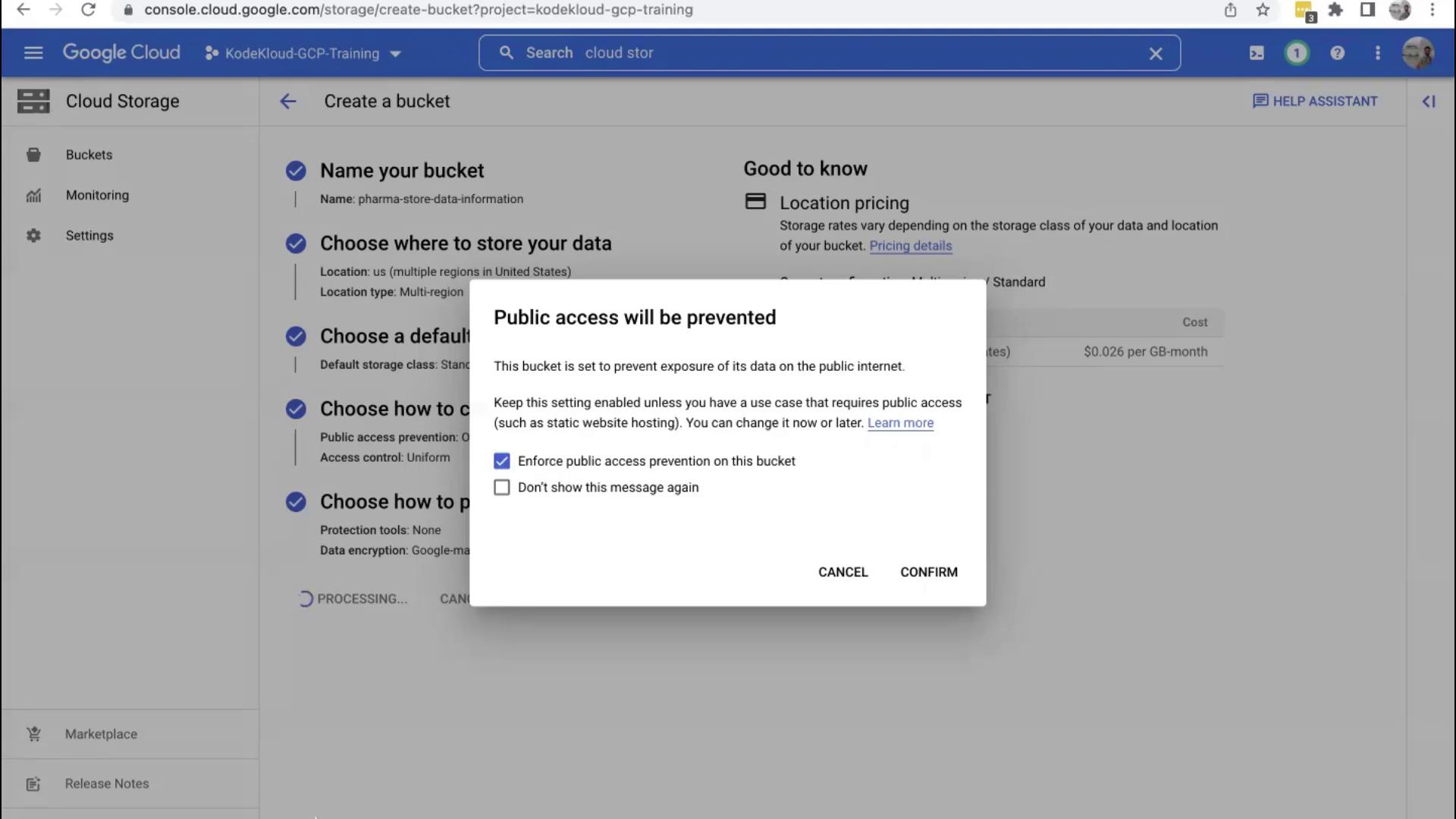
Upload Files to Your New Bucket
After your bucket has been successfully created, you can start uploading files. The bucket supports various file types such as images, documents, and audio files. To upload, simply click on the Upload button and select either individual files or an entire folder from your laptop.
For this demonstration, the process of clicking Upload Files and selecting a file is illustrated below:
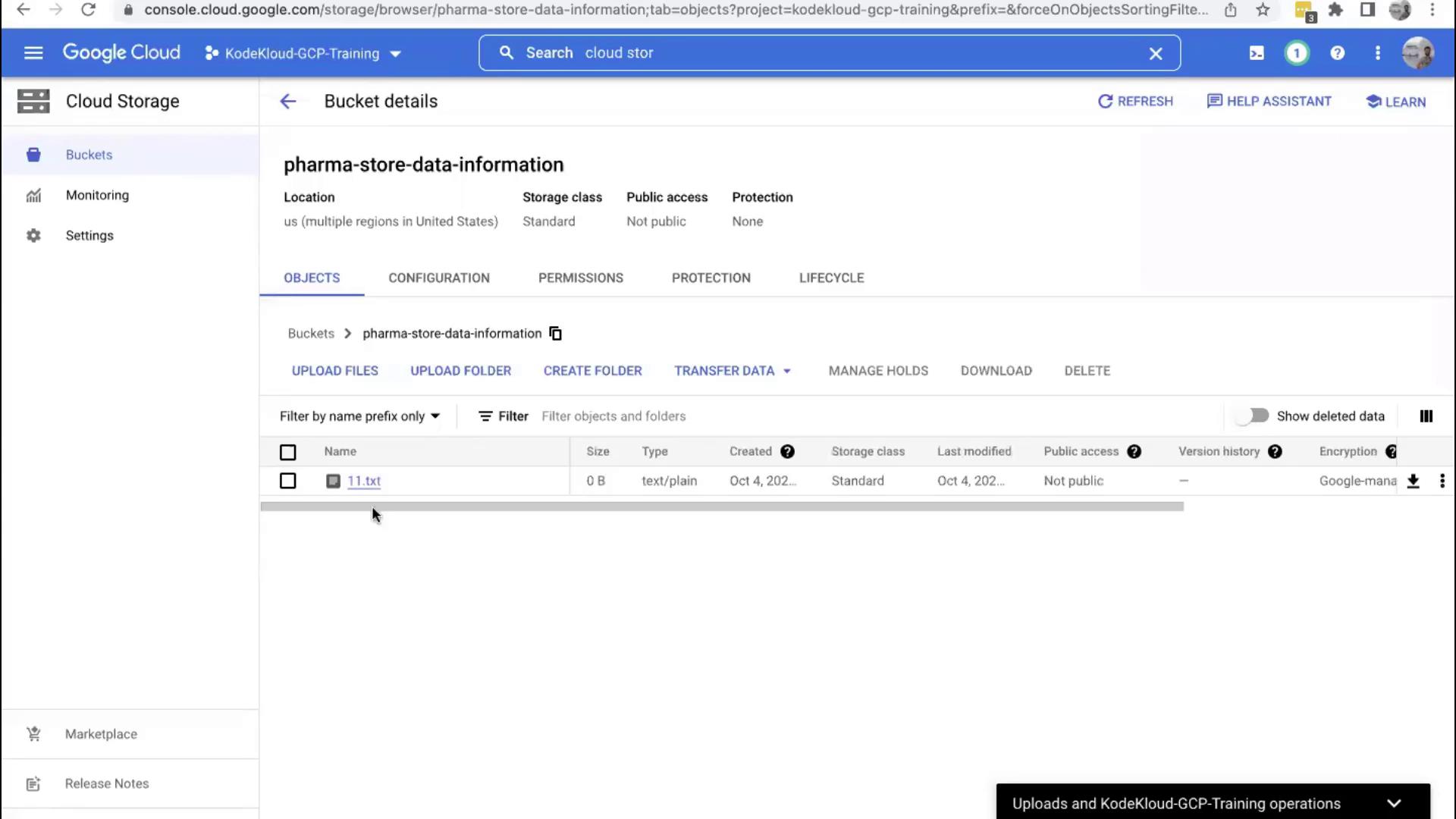
An important note is that the bucket and its contents are private by default. Only users with the necessary permissions can access the stored data.
Next Steps
Once your bucket is set up and files are uploaded, you can leverage it for various live activities within your projects. Stay tuned as future guides will cover more advanced configurations and best practices.
Thank you for following along with this demo. For further information, check out:
Happy cloud computing!
Watch Video
Watch video content